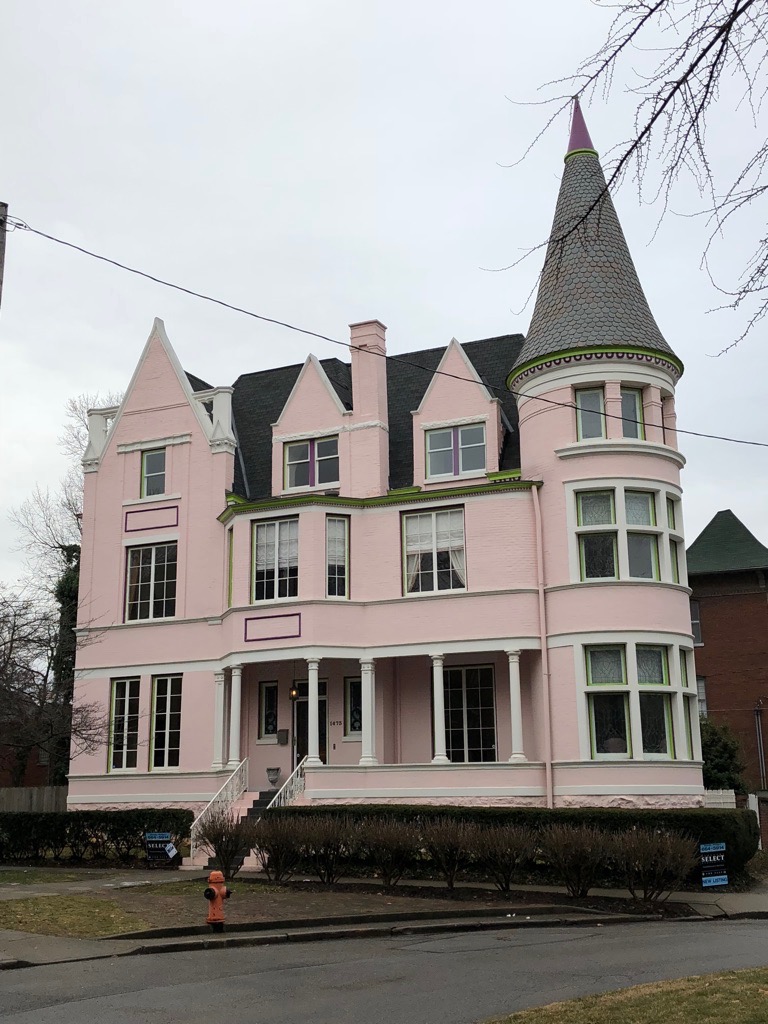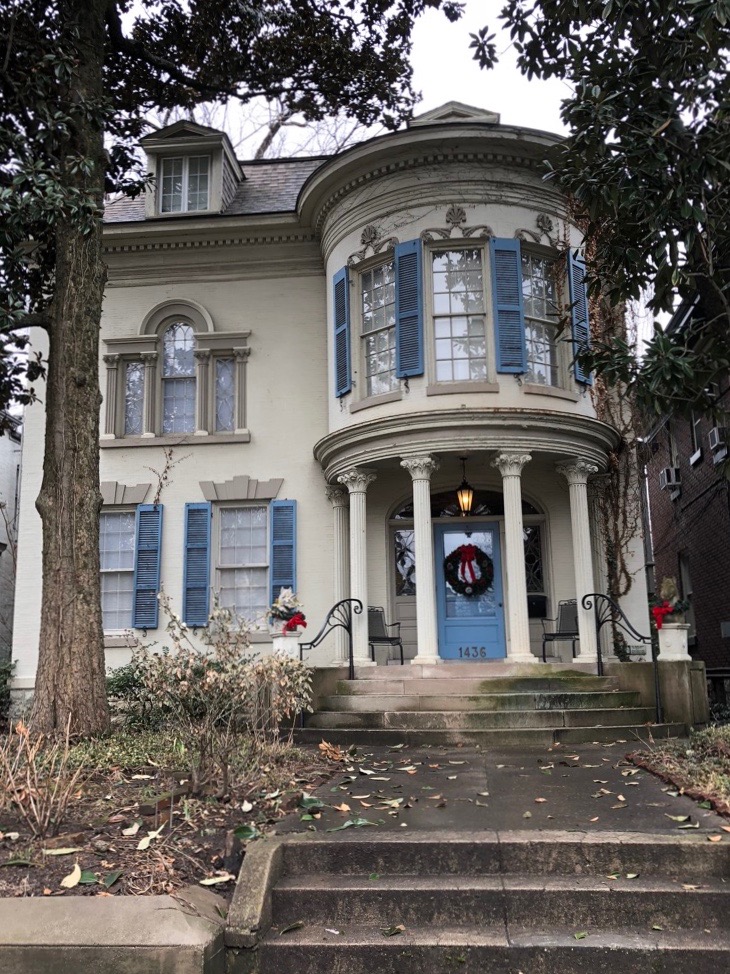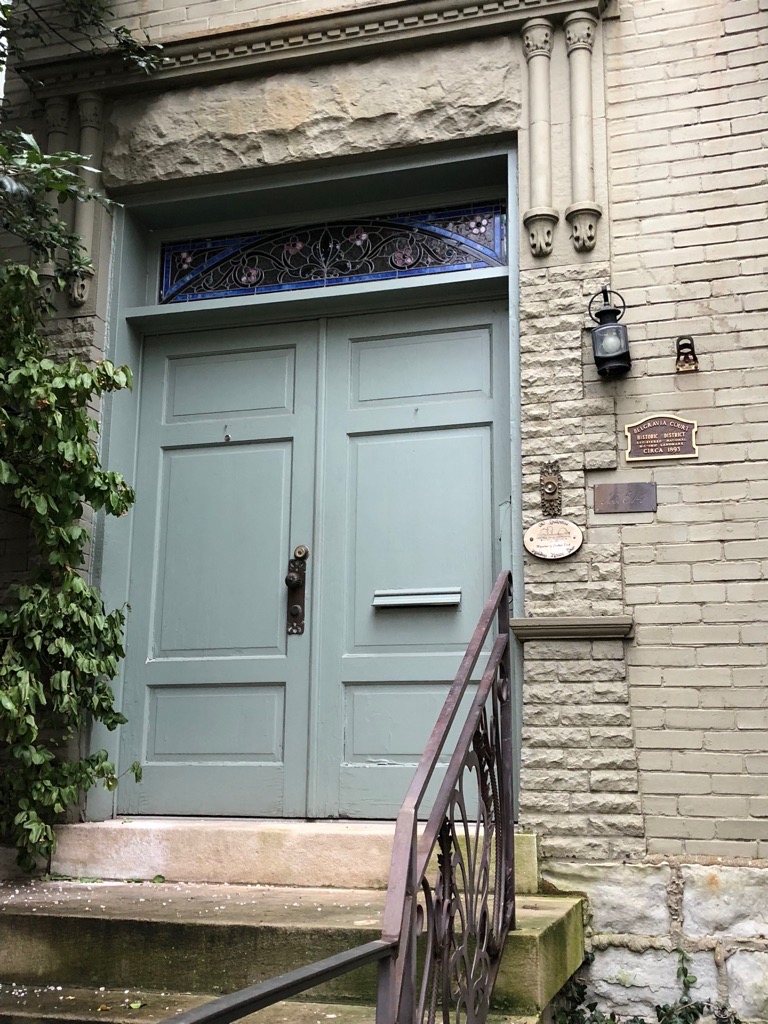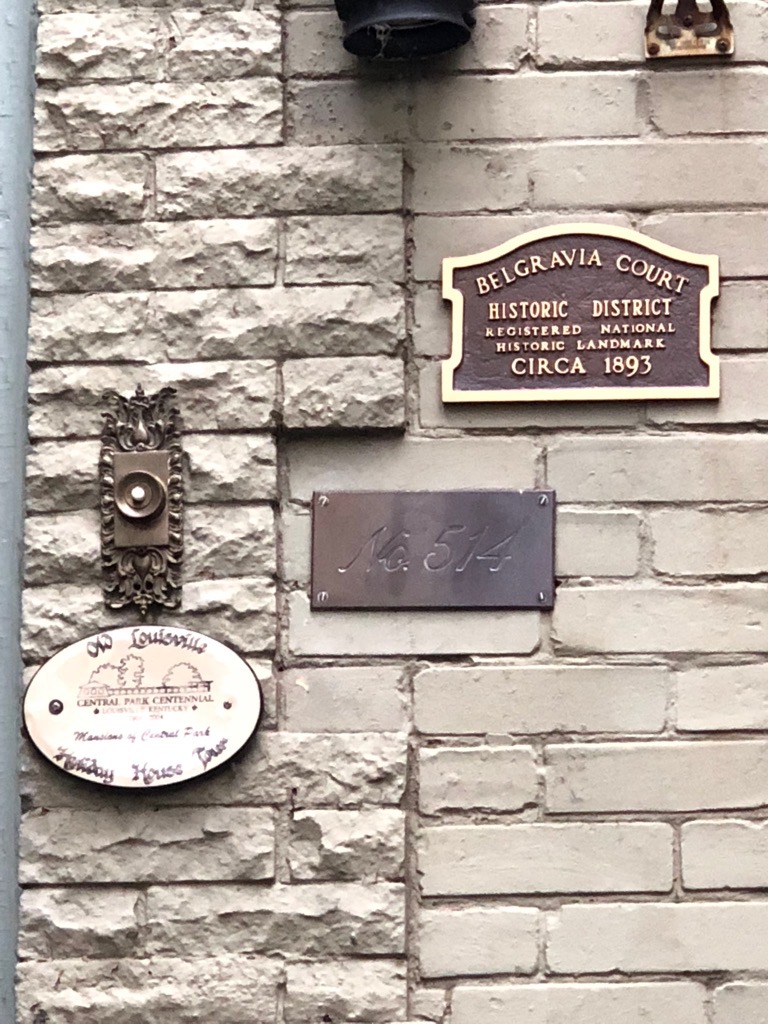It seems I am very into historic neighborhoods of late! Today we are in the Belgravia Neighborhood of Louisville, Kentucky. Old Historic Louisville is made up of 48 city blocks, near Downtown Louisville, and boasts of the largest preservation district featuring almost entirely Victorian architecture. The majority of homes are made of brick and the residential neighborhood has the highest concentration of stained glass windows in the United States. Now this was when homes were mansions! How did this all begin , you ask?
In 1883, the city hosted the Southern Exhibition, similar to the World’s Fair and other exhibitions all over the world at that time. An area of swampland outside the city was transformed for the exhibition, which featured the exhibition building; a wooden structure the size of six square blocks which revealed the marvels of the day and new innovations, including the first appearance of Thomas Edison’s electric light bulb! After five years the Exhibition ended and the display building was torn down. The area was deemed the perfect spot, for the very wealthy, to build their London and Paris style mansions. That area, became the city’s first planned community, St. James and Belgravia Courts. The Victoria Land Grant company sold lots to nouveau riche clients, who commissioned local architects to build the then-fashionable Victorian mansions. I won’t tell you about ALL the mansions, but I will detail a few.
The William Wathen House was built by architect, William Dodd, for prosperous jeweler, Joseph Werne, who rented it out. Are you following me here? This multi-million dollar house was built along the guidelines of a mansion in New York City that Mr. Werne admired. When the mansion was finished in 1897, he rented it to Dr Wathen, a surgeon in Louisville, who was one of the founders of the Louisville Medical School. Dr Wathen’s family owned the Wathen Kentucky Bourbon Distillery, which still is in existence.. Money meets money. Dr Wathen married Kate Roach in 1871 and had four daughters and one son. On his rented property, he built four grand houses (called townhouses), one for each daughter, although they were not as grand as the original house, which was considered Châteauesque. These four mansions are stilled called the “Four Sisters” today, and the original Châteauesque mansion is still there too. Here is a photo of Dr and Mrs. Wathen’s mansion. It is also the featured photo of my post.



The Pink Palace, built in 1891, in another neighborhood called St James Court, was a large three story brick, considered Eclectic and Châteauesque, but also had a steeply rounded turret at the front of the house. The turret room had a great view of the neighborhood and park. This mansion began as a Gentleman’s Club and Casino. It was a place for male residents of St James Court to relax and unwind from the stress of making all that money. They enjoyed good cigars, brandy, conversation and cards and in the evening hours the very large closets on the upper floors were used by ladies of the night to service them. All the goings on did not last very long. The mansion was sold to a private family in 1910. Then it was sold to a chapter of the Woman’s Christian Temperance Union for their headquarters. The red brick structure was painted pink! And it remains pink today! The mansion was sold several times and one owner was George H “Eardrum” Wilson, who invented early hearing devices!

The Pink Palace is up for sale again……anyone interested? Oh yeah, it is also listed as one of the haunted mansions with a ghost named Avery. He’s friendly though.

Let’s move on to other mansions shall we? I think what makes the doors interesting are all the varied entrances to the doors!






Am I seeing things here? Is that another Avery type in that window? He looks kinda ghoulish to me! That room has to be very odd and the ceiling not very high either!


After WWI the rich could no longer support the maintenance of their properties or the staff they needed to run it. Many of the mansions’ owners rented out rooms to pay the bills. After WWII The Housing Act of 1949 went into effect to clean up urban city neighborhoods and build larger streets and more affordable housing for men returning from the war. The Belgravia and St James neighborhoods turned their streets into parks to preserve the looks of their neighborhood. In the 70’s many of the mansions were converted into apartments, simply to keep them intact somehow. Today, many of the mansions are in need of repair and out of the 48 blocks, 4 blocks have been able to keep up with all the labor, time and money needed to maintain a mansion in Old Historic Louisville. Those blocks are worth the look…………..





Many of the homes had several plaques on them…… some were Registered Historic Landmarks and some also had one or more plaques for Community events and involvement, such as Holiday Tours.

I hope you found the Thursday Doors post interesting, not so many exciting doors, but the architecture and stories that went with the doors was interesting to me. I also did not see many stained glass windows either. I imagine those were removed and perhaps used inside the mansion or sold, to prevent them from being broken or for more efficient insulated windows. I’ll be writing two more posts about other neighborhoods in Louisville; the Bourbon Trail, in downtown Louisville, and Churchill Downs! See you next time, dear readers!
This is just one of many photos in the Thursday Door Collection featured by Norm2.0! Won’t you join in or take a peak at all the doors?
What interesting Gothic mansions: I hope they can be preserved.
LikeLike
It will take a great deal of effort I am afraid!
LikeLike
Absolutely stunning. I have got to go someday.
LikeLike
Yes, you should! Fabulous city!
LikeLike
Nice set of doors.
LikeLike
Very southern feeling neighborhoods, aren’t they? Lovely.
LikeLike
Definitely, but I thought their gardens weren’t as good and most non-existent! Too many rentals now!
LikeLike
Wonderful finds. What a gorgeous historic district!
LikeLike
Wow! That is absolutely NOT what I would have thought I’d see in Louisville. These grand homes are just gorgeous. Thanks for sharing them and for adding another place to my ever-growing list of place to visit 😀
LikeLiked by 1 person
Norm, Louisville went practically unscathed during the Civil War. It served the South, but was on the border with Indiana, which was a Northern state. So, the city was left pretty much undisturbed. Rich people on both sides went there to party. After the war it seemed like a great place to be for the same reasons and Louisville boomed!
LikeLike